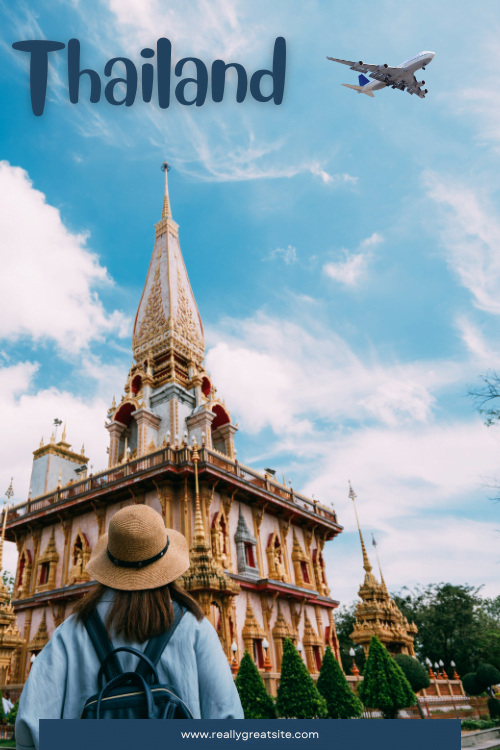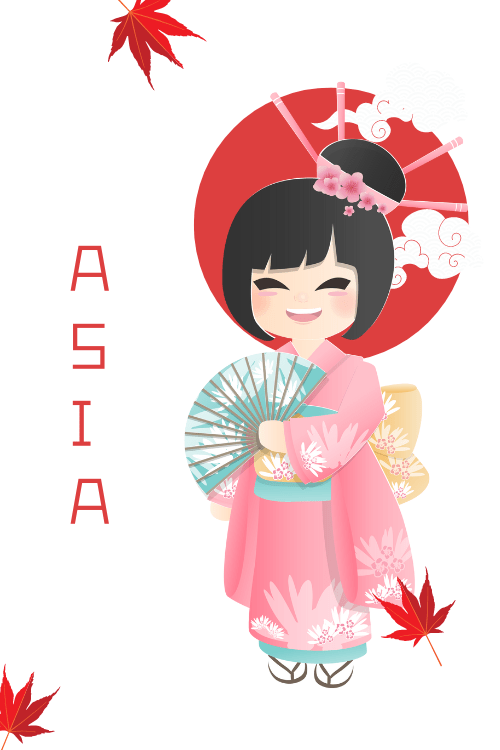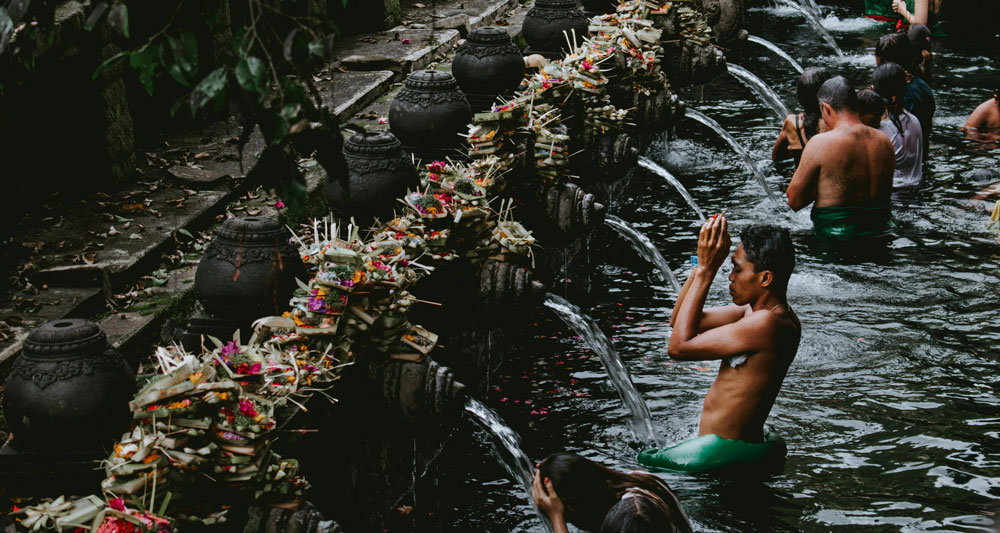Travel
The Best Time To Visit Bali: The Ultimate Guide (Updated 2025)
Is there really a best time to go to Bali?
I think “the best time of year” is highly specific to what you’re personally looking to experience, that alone will largely decide the time of year to visit Bali.
With that in mind we’ve designed this guide to go into a little more detail highlighting elements that you may not find in other Bali guides so hopefully you find it useful.
Let’s get started!
Geographic Overview
Bali stands as Indonesia’s crown jewel, positioned strategically between Java and Lombok in the Indonesian archipelago.
This 5,780 square kilometer island combines dramatic volcanic landscapes with pristine coastlines, creating a diverse topography that supports distinct microclimates and experiences.
Cultural Significance
Beyond its physical beauty, Bali’s designation as the “Island of the Gods” reflects its deep-rooted Hindu heritage in predominantly Muslim Indonesia.
The island operates on a complex ceremonial calendar that weaves religious observances into daily life, influencing everything from business operations to tourist accessibility.
Main Tourist Draws
Modern Bali has evolved into a multi-faceted destination catering to distinct traveler segments:
- Spiritual/Cultural Tourism: Centered around Ubud and traditional villages
- Luxury Resort Scene: Concentrated in Nusa Dua and Jimbaran
- Digital Nomad Hubs: Primarily in Canggu and parts of Ubud
- Surf Culture: Spanning from Uluwatu to Canggu
- Wellness Tourism: Scattered across Ubud and southern coastal regions
The Critical Timing Factor
Understanding Bali’s timing patterns significantly impacts:
Experience Quality
- Temple ceremony access varies by calendar
- Marine life visibility follows seasonal patterns
- Cultural festivals cluster around specific months
- Surf conditions change dramatically by season
Cost Implications
- High season rates can triple low season prices
- Flight costs fluctuate based on Australian and European holidays
- Villa availability tightens during peak digital nomad periods
- Local transport costs vary with tourist density
Activity Accessibility
- Some water sports become impossible during monsoon
- Popular hiking trails close during heavy rain periods
- Cultural performances increase frequency in peak seasons
- Certain beaches become unsafe during specific months
Bali’s Climate Patterns
Dry Season (April to October)
Temperature Patterns
The dry season brings Bali’s most predictable and tourist-friendly weather. Daytime temperatures typically hover between 27-32°C (80-90°F), while nights remain comfortable at 22-25°C (72-77°F).
These moderate temperatures create ideal conditions for both coastal and inland activities.
Humidity and Sun Exposure
Despite being the “dry” season, Bali maintains relatively high humidity levels around 60-75%. Sun exposure peaks during this period, with 10-12 hours of reliable sunshine daily.
The most intense sun occurs between 11 AM and 3 PM, particularly from July through August.
Wind Conditions
Southeast winds dominate this season, creating excellent conditions for:
- Perfect waves at west-facing surf breaks
- Reduced rainfall across most regions
- Clear visibility for diving and snorkeling
- Ideal conditions for beach activities
Wet Season (November to March)
Rainfall Characteristics
The wet season brings short but intense daily rainfall, typically lasting 1-2 hours in the afternoon. Morning activities generally remain unaffected, as storms usually develop after midday.
| Month | Average Rainfall (mm) | Average Temperature (°C) |
|---|---|---|
| November | 165 | 27.4 |
| December | 198 | 27.5 |
| January | 255 | 27.5 |
| February | 245 | 27.8 |
| March | 165 | 27.9 |
| April | 100 | 28.3 |
Regional Weather Variations
Coastal Areas
Coastal regions experience:
- Brief but intense afternoon showers
- Quick-clearing skies
- Higher humidity (80-90%)
- Moderate temperatures 25-31°C (77-88°F)
Inland and Mountain Areas
The central regions, including Ubud and mountain areas, face:
- Longer rainfall duration
- More frequent morning mist
- Cooler temperatures 20-28°C (68-82°F)
- Higher rainfall accumulation
Humidity Impact
Wet season humidity creates distinct challenges:
- Camera equipment requires extra protection
- Mold can affect stored clothing
- Air-conditioning becomes essential
- Electronics may need dehumidifier storage
Microclimate Considerations
Bali’s varied topography creates notable microclimate variations. The Bukit Peninsula often remains drier than central regions, while the northern coast experiences less rainfall than the south. Mountain areas like Bedugul can see significant temperature drops and increased precipitation, even during the dry season.
Peak Tourist Seasons Analysis
High Season (July-August)
Tourist Demographics
The mid-year peak brings a distinct mix of international visitors, primarily shaped by the Northern Hemisphere summer holidays.
European families dominated this period, followed by Australian travelers seeking winter sun. North American tourists typically represent a smaller but consistent segment, often combining Bali with broader Southeast Asian itineraries.
Infrastructure Impact
The surge in visitors creates significant pressure on Bali’s infrastructure. Traffic congestion peaks between 9 AM and 6 PM, particularly on the main arteries connecting Seminyak to Canggu and Ubud to southern beaches.
Restaurant waiting times can extend to 45-90 minutes at popular venues, with many requiring advance reservations.
Booking Challenges
During this peak period, accommodation prices typically increase 50-200% above low-season rates. Premium villas and boutique hotels often book out 3-6 months in advance, while high-end restaurants require reservations 2-3 weeks ahead.
Holiday Season (December-January)
Christmas Period
The Christmas week brings a distinct atmosphere to Bali, with hotels and restaurants offering special events and themed celebrations. Western-style holiday celebrations blend with local traditions, creating a unique cultural fusion.
New Year Celebrations
New Year’s Eve transforms Bali’s major tourist areas:
- Kuta and Seminyak host beach parties
- Luxury resorts offer exclusive gala dinners
- Ubud focuses on wellness and spiritual events
- Firework displays light up the coastline
Local Festival Overlap
This period often coincides with local ceremonies and festivals, adding complexity to travel planning. Galungan and Kuningan celebrations can affect business hours and traffic patterns, while temple ceremonies may restrict access to certain attractions.
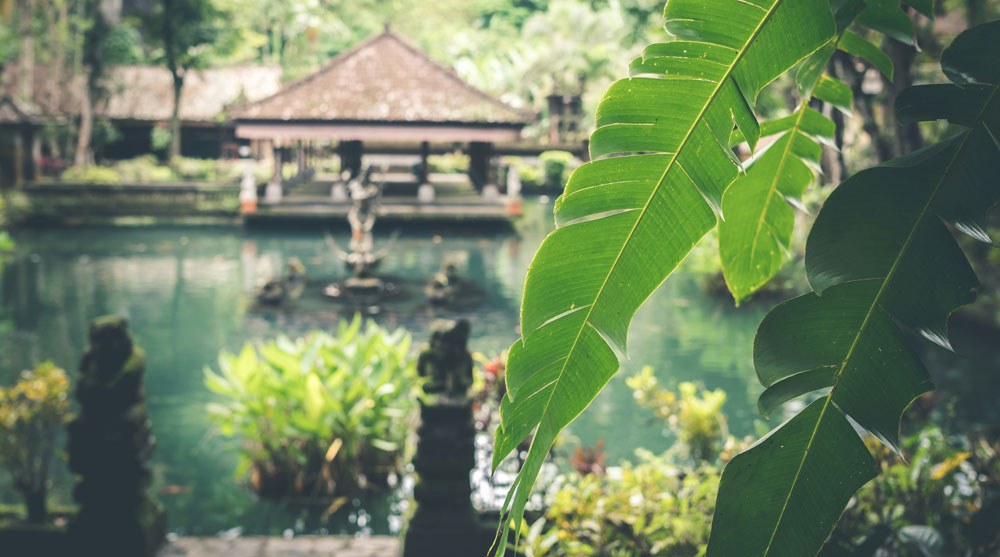
Secondary Peak (Easter)
Duration and Character
The Easter peak typically spans two to three weeks, bringing a shorter but intense surge of visitors. This period attracts:
- Australian families during school holidays
- European early-season travelers
- Asian regional tourists
- Digital nomads avoiding primary peak season
Specific Considerations
Easter season presents unique challenges and opportunities:
- Moderate weather conditions
- Beginning of dry season
- Rising accommodation rates
- Increasing activity availability
Ideal Visiting Periods
April to June (Primary Shoulder Season)
Weather Advantages
This period represents Bali’s sweet spot for climate conditions. Transitioning from wet to dry season brings stable weather patterns with gradually decreasing humidity. Temperatures remain pleasant, typically ranging from 25-30°C (77-86°F), while the landscape retains its lush greenery from the recent rainy season.
Tourist Density
Visitor numbers during this period strike an ideal balance. Popular areas maintain a lively atmosphere without the overwhelming crowds of peak season. Major attractions like Tanah Lot and Uluwatu temples can be enjoyed without extensive queuing, while restaurants generally accommodate walk-ins comfortably.
Price Advantages
This shoulder season offers exceptional value across all spending categories:
Accommodation rates average 30-40% below peak prices, with greater negotiating power for extended stays. Many luxury properties offer “stay-pay” deals or complimentary upgrades.
Transportation costs remain stable, with better availability of quality rental vehicles and private drivers. Flight prices typically stay moderate, especially for regional connections.
Activities and tours operate at full capacity but with lower booking pressure, often allowing for last-minute arrangements and potential discounts.
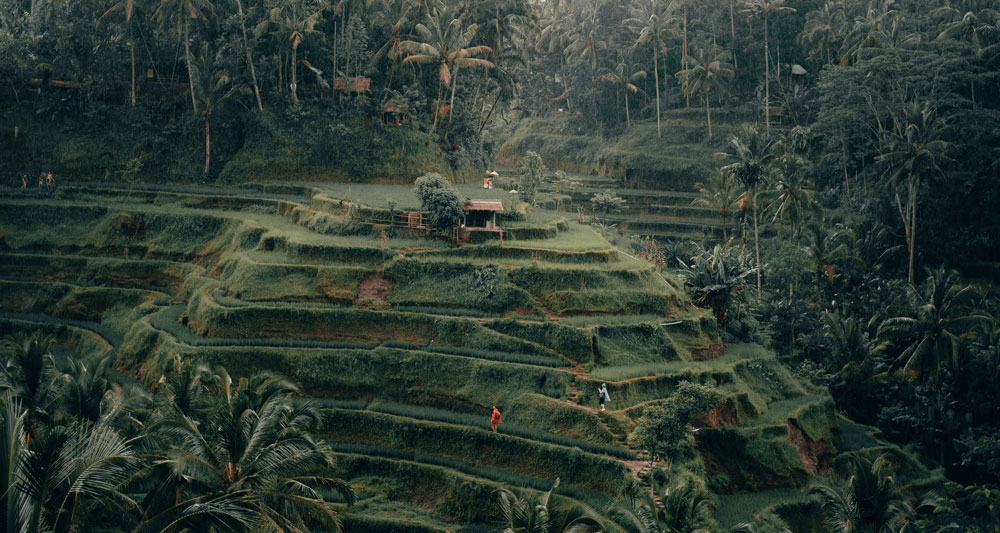
September to October (Secondary Shoulder Season)
Post-Peak Benefits
Following the July-August rush, September brings a welcome deceleration in tourist traffic. The island maintains its high-season infrastructure and service levels while returning to a more relaxed pace. Beach clubs and popular venues become more accessible, often without sacrificing their vibrant atmosphere.
Cultural Event Opportunities
This period coincides with numerous traditional ceremonies and modern cultural festivals. Local communities, less pressured by peak tourism demands, often present more authentic ceremonial experiences. Major events include:
- Bali Arts Festival conclusions
- Traditional temple anniversaries
- Modern music and arts festivals
- Food and wellness gatherings
Photography Conditions
The late dry season presents optimal conditions for photography enthusiasts:
- Clear morning light for landscape shots
- Dramatic sunset skies
- Lower humidity for equipment
- Better visibility for aerial photography
- Perfect conditions for rice terrace photos
- Clearer waters for underwater photography
The consistent weather patterns and reduced haze make this period ideal for both amateur and professional photographers seeking to capture Bali’s diverse landscapes and cultural elements.
Activity-Specific Timing
Water Sports
Surfing
Bali’s surf conditions vary dramatically by location and season. The dry season (April-October) brings consistent swells to the western coastline, while the wet season favors eastern breaks. Uluwatu and Padang Padang peak between June and August, with waves reaching 4-8 feet consistently.
Diving
Underwater visibility and marine life encounters follow distinct seasonal patterns. The best diving conditions occur during the dry season, with visibility extending to 30+ meters at premier sites like Nusa Penida and Amed. Mola Mola (sunfish) appearances peak between July and October, while manta ray sightings remain consistent year-round at Nusa Penida.
Snorkeling
Optimal snorkeling conditions align with the dry season’s calmer seas and better visibility. Protected bays like Blue Lagoon and Padangbai offer year-round access, though morning sessions provide the best experience regardless of season.
Cultural Activities
Temple Ceremonies
Balinese ceremonies follow a complex 210-day calendar, making timing both crucial and challenging. Major temple anniversaries (odalan) occur throughout the year, with the most significant celebrations including:
- Galungan and Kuningan (rotating dates)
- Pura Besakih festivals
- Full moon ceremonies (each lunar month)
- New moon observations
Art Festivals
Cultural performances and art exhibitions cluster around specific periods:
- Traditional dance performances intensify during dry season evenings
- Ubud Writers & Readers Festival (October)
- Bali Arts Festival (June-July)
- Gallery openings peak during shoulder seasons
Nature Activities
Hiking Conditions
The dry season provides optimal hiking conditions across Bali’s diverse terrain. Mount Batur sunrise treks offer the clearest views from June to September, while waterfall hikes become more manageable as water levels decrease through the dry season.
Rice Terrace Viewing
Rice cultivation follows a complex schedule influenced by water availability and traditional farming practices:
- Tegalalang terraces show varied stages year-round
- Jatiluwih’s vast terraces peak in greenery during wet season
- Harvest activities concentrate in dry season months
- Early morning lighting offers optimal photography regardless of season
Nature Park Visits
Wildlife and nature park experiences vary seasonally:
- Monkey forests remain active year-round
- Bird watching peaks in early morning hours
- Butterfly park activity increases during sunny periods
- Botanical gardens show most diversity during wet season
Regional Considerations
South Bali (Kuta, Seminyak, Nusa Dua)
Season-Specific Characteristics
South Bali experiences the most consistent weather patterns on the island. The dry season brings reliable sunshine and moderate humidity, making it ideal for beach activities. During wet season, afternoon showers typically last 1-2 hours, with mornings remaining largely clear.
Crowd Patterns
Tourism ebbs and flows create distinct atmospheres throughout the year:
Kuta maintains its energy year-round but becomes particularly intense during Australian school holidays. Seminyak’s sophisticated venue scene peaks from June through September, while Nusa Dua’s controlled resort environment provides consistency regardless of season.
Central Bali (Ubud)
Climate Variations
Ubud’s elevation creates a unique microclimate. Temperatures average 3-4°C cooler than coastal regions, with higher rainfall frequency even during dry season. Morning mist characterizes June-August, creating atmospheric conditions perfect for photography but occasionally affecting outdoor activities.
Cultural Event Timing
Ubud’s cultural calendar influences the visitor experience significantly:
Traditional ceremonies occur year-round, with major temple festivals concentrated between June and September. The arts scene intensifies during literary and cultural festivals, while wellness events cluster around shoulder seasons to take advantage of optimal weather.
North and East Bali
Microclimate Details
The northern and eastern regions present distinct weather patterns from the south:
North Bali (Lovina, Singaraja)
- Drier conditions than the south
- More predictable weather patterns
- Clearer mornings for dolphin watching
- Lower annual rainfall
East Bali (Amed, Candidasa)
- Protected from western monsoons
- Better diving conditions during wet season
- Clearer skies during morning hours
- Strong afternoon winds from July to August
Accessibility by Season
Regional access varies significantly with seasonal conditions:
Road conditions to northern regions improve during dry season, reducing travel time from southern hubs. Eastern coastal roads remain consistent year-round, though morning travel is recommended during wet season to avoid afternoon rain.
Mountain passes to northern regions can experience fog and reduced visibility from June to August, particularly during early morning and late afternoon hours. The new eastern highway has improved accessibility but still experiences seasonal traffic variations.
Budget Planning
Seasonal Price Variations
Accommodation
The island’s accommodation costs fluctuate dramatically throughout the year:
Luxury Resorts
Peak season rates (July-August, December-January) often double, with minimum stay requirements enforced. Five-star properties in Nusa Dua and Jimbaran typically charge $400-1000+ per night during high season, dropping to $250-600 during low season.
Mid-range Hotels
These properties show more moderate fluctuations, typically increasing 30-50% during peak periods. Standard rates range from $80-200 in low season to $120-300 in high season, with significant variations by location.
Budget Options
Guesthouses and local hotels maintain more stable pricing but still increase 20-30% during peak periods. Low season rates start from $15-40, rising to $25-60 during high season.
Flight Patterns
International Routes
Pricing follows predictable patterns based on origin markets:
European connections peak during July-August, with prices increasing 40-100%. Australian routes surge during school holidays and winter escape periods. Asian regional flights show more stable pricing but peak during Chinese New Year and local holidays.
Regional Connections
Domestic flights within Indonesia fluctuate less dramatically but still show seasonal patterns:
- Jakarta-Bali routes increase 30-50% during peak periods
- Weekend flights command premium pricing year-round
- Early morning and late night flights offer better value
- Last-minute booking penalties increase during high season
Local Costs
Transportation
Local transport costs reflect tourist demand:
Airport transfers maintain fixed rates but can increase during peak hours. Daily car rentals with drivers increase 20-30% during high season. Scooter rentals show minimal seasonal variation but require longer commitments during peak periods.
Food and Dining
Pricing varies by establishment type:
Local warungs maintain consistent pricing year-round. Mid-range restaurants increase prices 10-20% during peak seasons. High-end venues implement premium pricing and strict reservation policies during high season.
Activities
Tour and activity pricing follows seasonal patterns:
Water sports and popular tours increase 15-30% during peak season. Cultural activities maintain more stable pricing. Private guides and custom tours command premium rates during high season.
Value Seasons
Best Price-to-Experience Ratios
Optimal value periods occur during:
- October-November (excluding holidays)
- February-March (post-holiday season)
- Early May (pre-peak season)
- Late September (post-peak season)
Hidden Costs by Season
Additional expenses vary seasonally:
High Season
- Premium transport rates
- Mandatory holiday dinners at resorts
- Advanced booking fees
- Higher guide rates
Low Season
- Potential weather-related activity cancellations
- Additional transportation costs due to rain
- Indoor activity alternatives
- Generator charges during power fluctuations
Practical Considerations
Health and Safety
Seasonal Health Concerns
Different seasons present distinct health considerations requiring specific preparation:
Dry Season
Medical attention focuses on sun exposure, dehydration, and heat-related issues. Dust allergies become more prominent, particularly in urban areas. Air quality can decrease during agricultural burning periods, typically in September.
Wet Season
Mosquito-borne illness risk increases, requiring enhanced prevention measures. Waterborne diseases demand greater attention to food and water sources. Humidity-related skin conditions become more common.
Weather-Related Precautions
Seasonal weather patterns necessitate specific safety measures:
Dry Season
Sun protection becomes crucial, with UV index reaching extreme levels between 10 AM and 4 PM. Ocean conditions require attention due to stronger currents and higher waves. Dehydration risk increases during outdoor activities.
Wet Season
Lightning safety becomes essential during afternoon storms. Road conditions require extra caution, particularly on scooters. Beach safety focuses on rip currents and sudden weather changes.
Transportation
Airport Transfers
Seasonal variations affect airport logistics:
Peak Season
Pre-booking becomes essential as authorized taxi queues can exceed two hours. Private transfer rates increase by 20-30%. Traffic delays can add 30-60 minutes to transfer times.
Off-Peak Season
More negotiating power with transport providers. Shorter wait times for all transport options. More flexible departure scheduling.
Local Mobility Options
Dry Season
Scooter rental becomes more viable with predictable weather. Walking between venues remains comfortable in morning and evening hours. Boat services to nearby islands operate more frequently.
Wet Season
Ride-hailing services experience higher demand during rain. Indoor parking becomes premium at popular venues. Alternative route planning becomes necessary due to flooding.
Booking Windows
Advance Booking Requirements
High Season (July-August, December-January)
- Premium accommodations require 4-6 months advance booking
- Popular restaurants need 2-3 weeks notice
- Group villa rentals should be secured 6+ months ahead
- Flight bookings are optimal 3-4 months in advance
Shoulder Seasons (April-June, September-October)
- Accommodations can be secured 2-3 months ahead
- Restaurant reservations needed 1 week in advance
- Activities can be booked with shorter notice
- Flight prices remain stable until 6-8 weeks before
Last-Minute Opportunities
Off-Peak Strategies
Last-minute bookings become viable, often with significant discounts. Luxury properties occasionally offer flash deals to fill rooms. Tour operators provide same-day booking options with competitive pricing.
Risk Assessment
Weather uncertainty can affect activity plans. Popular venues maintain stricter booking policies regardless of season. Transportation options may become limited without advance arrangements.
Need Cheap Mobile Data While Traveling in Indonesia?
Explore Indonesia without worrying about global roaming charges with eSIMs.
- They’re affordable, offering data rates at a fraction of what it would cost for global roaming.
- They’re quick and easy to set up, simply scan a QR code and your package is downloaded to your mobile device.
- Can be used all across Indonesia and switches to different mobile networks automatically from region to region so you don’t need to do anything.
- No SIM cards – if your mobile device supports eSIM technology, no need to remove your existing SIM simply download an eSIM.
- 100% prepaid – no nasty bill shock.
- Top up if you need more data.
- Set up before you leave or when you enter Indonesia.
Click here to see our list of eSIM plans!
– staying connected is essential. eSIM technology from providers like eSIM4.com offers a seamless solution for modern travelers, eliminating the hassle of traditional SIM cards.
Related Articles:



